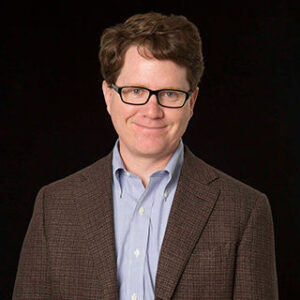
The Metropolitan Museum of Art possesses the finest, most comprehensive collection of Medieval and Byzantine art in the western hemisphere. It is held in two locations: the galleries of the Met’s main building on 5th Avenue and The Met Cloisters in Fort Tryon Park. Dr. C. Griffith Mann will discuss the history of the collection and the role played by J.P. Morgan in its development.
Dr. Mann was appointed The Metropolitan Museum of Art’s Michel David-Weill Curator in Charge of the Department of Medieval Art and the Met Cloisters in September, 2013. In this role, he is responsible for the medieval collections and curatorial staff in the Met’s main building, and for directing the staff and operations of the Met Cloisters, the branch of the Metropolitan Museum dedicated to the art and architecture of medieval Europe. Dr. Mann received his B.A. in art history and history from Williams College, and his Ph.D. in medieval art from The Johns Hopkins University. A specialist in the arts of late medieval Italy, he has published on civic patronage, painting, and devotion in Tuscany. As a curator, Dr. Mann has worked on exhibitions on the medieval cult of relics, the art and archaeology of medieval Novgorod, and French manuscript illumination of the 13th century. He formerly served as the Chief Curator and Deputy Director at The Cleveland Museum of Art, where he helped to lead the museum’s reinstallation, acquisition, and exhibition programs, and as medieval curator and Director of the Curatorial Division at The Walters Art Museum, where he worked on exhibitions and the permanent collection.
Arranged by Bryan Hooper
Bryan’s summary of the talk:
Dr. Griffith Mann returned to the DMA’s virtual podium to relate the story of J.P. Morgan’s important role in the development of the Metropolitan Museum of Art, and illustrated his narrative with selected items from the Met’s collection of medieval art.
From the end of the Civil War in 1865 there was increasing interest by civic and business leaders in fulfilling a vision of the United States as having cultural centers on a par with the best in Europe, and to display original artwork from past and present civilizations. Philanthropists began work on establishing museums around the country in cities including Boston, Philadelphia, Washington, D.C., and, of course, New York, where the Met was founded in 1870, and opened in 1872. Morgan became a trustee in 1889 and was elected President in 1904. In that position, he spearheaded the growth of the Met’s extensive building expansion, which was initiated in 1907 and completed in 1926, as well as setting high professional standards for the museum staff to establish a reputation for expertise and competence in the growing enterprise.
As an art collector, he focused his efforts on following in the footsteps of royal collectors in Europe to concentrate on building his collection by buying items that were not only rare, but also high in quality. His preference in collecting was on objects rather than paintings, although they were not excluded. A major interest for Morgan was archaeological research, particularly in Egyptology, forming the basis of the Met’s current collection for the field, and also in manuscripts and early books, which led to the establishment of the Morgan Library. While he tended to concentrate on individual purchases of interesting objects, Morgan was not averse to buying collections – a French purchase was so large that the Met built a new wing for it! Some of his amassed art works were stored in London at one of his residences, as well as being on display at the Victoria & Albert museum in South Kensington. This was necessitated by heavy import taxes in place until 1909, which deterred shipment to the US, and consequently retarded the growth of the Met’s ability to display more objects.
When Morgan died in 1913, his will stipulated that his executors should “…render the objects permanently available for the instruction and pleasure of the American people…” However, there were no specifics defined, and it was left to Jack Morgan, his son, to ensure the will was carried out. The collection was shown at the Met in its entirety in 1916, and then dispersed to various destinations. In 1917, Jack Morgan gave the museum over 7000 objects, many of which became the foundation of the medieval collection at the Metropolitan Museum of Art.
Apart from visiting the Cloisters to view some of the art bequeathed by J.P. Morgan, you can also see other artworks from the collection that were donated to the Wadsworth Atheneum in Hartford, the city where Morgan was born and buried. The video recording of the presentation by Dr. Mann is posted below, where you will enjoy his ability to tell and show an intriguing story to such good effect.
Video of presentation: https://youtu.be/3bN8stiMyOM
